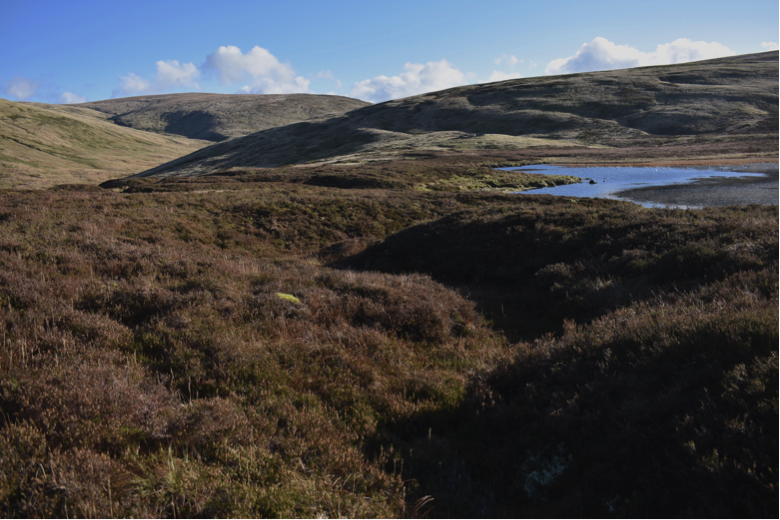The UK is blessed with many ridiculous and comical place names. One of the best resides within a remote valley in the Scottish Border, close to a saddle high in the Moffat Hills. It is a peatland and its name is ‘Rotten Bottom’.
Sadly the name Rotten Bottom is all too apt for this peatland as (over the centuries) it has become degraded. Where once it was a flourishing, biodiverse carbon store, which soaked up the annual rains like a sponge, it has now become eroded, drained and a source of greenhouse gas emissions.
Unfortunately, Rotten Bottom’s story is far from unique: almost all of the UKs peatlands have been heavily modified by people at some point in their history. In the lowlands, intensive agriculture has taken place on the fen peatlands of East Anglia and elsewhere for centuries, while in the uplands historic overgrazing, drainage and burning of the land has damaged these sensitive habitats.
Scientists estimate that 80% of the UK’s peatlands are degraded in some way. That is an enormous problem, because these huge carbon stores are now releasing 23 million tonnes of CO2e into the atmosphere every year. To put that figure in context, 23Mt is around 5% of the UK’s total carbon footprint, more than half of the 9% that aviation contributed in 2019. If the UK is to reach net-zero by 2050, restoring our degraded peatlands will be essential.
Peatlands also suffer from a PR problem. Compared to tree planting, peatland restoration is not very well known as a nature-based solution and even amongst those who are aware of it, woodland creation is often more appealing. Somehow those of us working in peatland restoration need to make bogs seem more attractive, to extol their virtues until the public are as engaged in issues like peat-extraction for gardening compost as they are about deforestation. There are signs that peatlands are gaining traction, with a recent announcement from the UK government that peat-based compost will be banned in this country by 2024, but there is still much work to do.
In an effort to further persuade ourselves of the wonders of these wetlands, the Forest Carbon team recently visited Talla and Gameshope, the estate where Rotten Bottom and three other peatlands are being restored by our partner, Borders Forest Trust.
We were blessed with amazing weather for the visit. Clear blue skies and a cold northerly wind meant that a lot of the wet turf was frozen, helping us keep our boots dry during the long walk in.
We also got to the see the contractors at work, undertaking restoration while we were there. This is done using heavy plant (i.e. diggers), and the skill with which the operators handle their machinery is astonishing. Deft movements with the bucket allow strips of turf to be cut from the ground like butter, which enables peat haggs to be rapidly reprofiled, limiting oxidation of the exposed peat and guarding against future erosion of the bog.
 The local Peatland ACTION officer explaining how peat haggs form, and what impacts they have on the ecology and hydrology of the bog
The local Peatland ACTION officer explaining how peat haggs form, and what impacts they have on the ecology and hydrology of the bog
 An erosion gully photographed immediately post-restoration, with no bare peat remaining
An erosion gully photographed immediately post-restoration, with no bare peat remaining
It wouldn’t be everyone’s ideal job. But on the day we visited, with blue skies and a bevy of whooper swans flying around a nearby loch, it seemed a pretty decent office to be working from.
It will be interesting to visit the site again in the summer, when the cotton grass seed heads are out and the heather is in bloom. Maybe taking some of our corporate partners out onto peatlands like this will be the key to increasing awareness of how beautiful and precious these habitats are. They say that ‘seeing is believing’ and, certainly for the Forest Carbon team, being able to witness the contractors at work really put into perspective how incredible these peatlands, and the people restoring them, are.
 One of the diggers hard at work reprofiling a peat hagg
One of the diggers hard at work reprofiling a peat hagg
/public/694/2e2/b68/6942e2b689131175280316.jpg)
/public/692/dd7/e0c/692dd7e0ca905474952387.jpg)
/public/68f/f39/36d/68ff3936defff352354004.jpg)